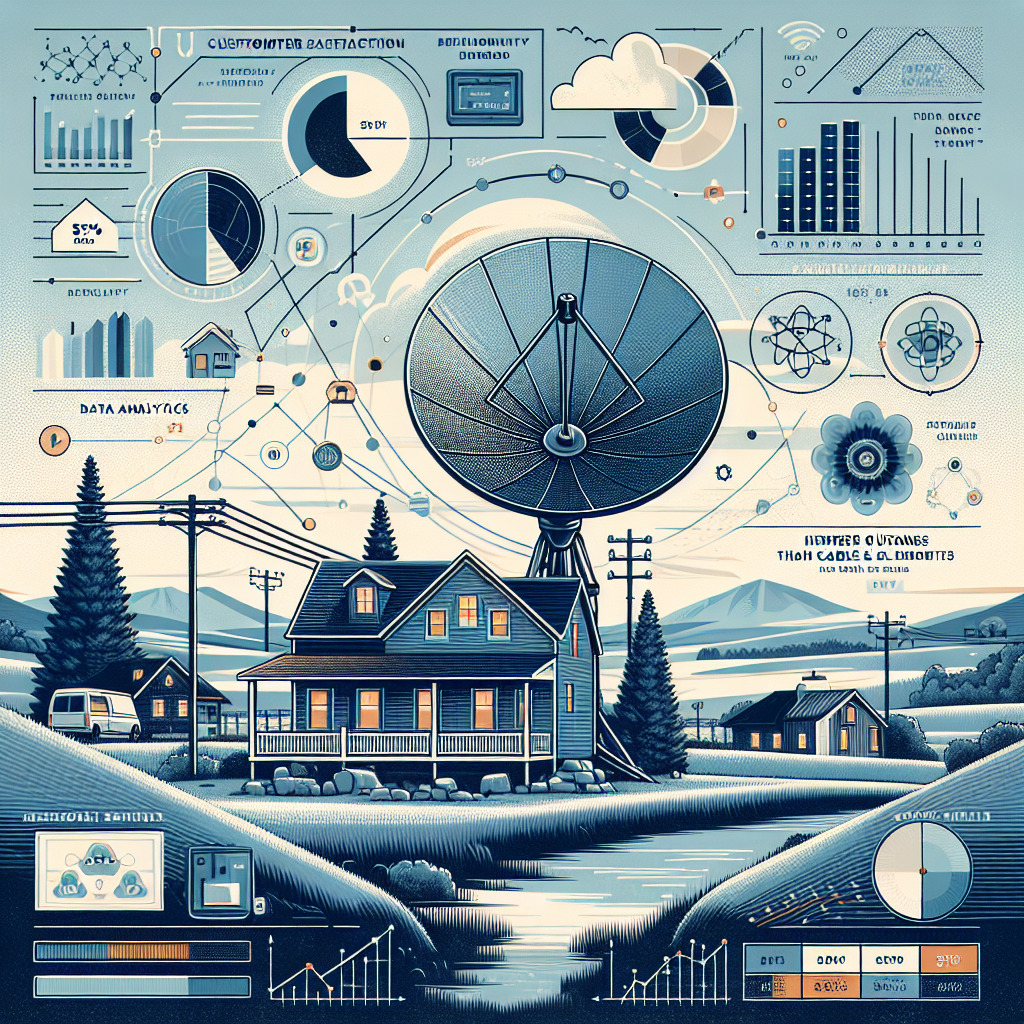Key Takeaways
- Reliable service with fewer outages than cable and DSL.
- 85% of customers are in rural areas, shifting from small providers or new to home internet.
- Strong customer satisfaction backed by a large-scale study.
- Over 6,146 satellites launched ensuring capacity and reliability.
- Exploring federal broadband funding opportunities through BEAD program.
Starlink’s Rural Market Domination
SpaceX’s satellite broadband service, Starlink, is making waves in the rural broadband market by providing a reliable and robust alternative to traditional cable and DSL services. An insightful study by Recon Analytics sheds light on Starlink’s competitive strengths and the challenges it faces in these underserved regions.
Service Reliability
One of the standout features of Starlink is its service reliability. Compared to traditional broadband options like cable and DSL, Starlink users experience fewer service outages. This makes it an incredibly attractive option in areas where internet reliability has historically been a significant issue. Although fiber broadband users report fewer outages than Starlink customers, the satellite service offers a viable alternative to areas where fiber infrastructure is non-existent.
Penetration into the Rural Market
A substantial portion of Starlink’s customer base is in rural areas, accounting for a stunning 85% of its total users. Interestingly, many of these subscribers either switched from small, local providers or are first-time home internet users. This shift underscores the necessity and advantage of a reliable broadband service like Starlink in rural parts where other options may have limitations.
Unprecedented Customer Satisfaction Levels
Recon Analytics conducted the first large-scale customer satisfaction study of Starlink, gathering data from over 153,000 respondents, which included more than 1,300 Starlink subscribers. The results highlighted high satisfaction levels, indicating that Starlink is meeting or even exceeding customer expectations, especially in terms of reliability and service availability.
Operational Infrastructure
Starlink has launched an impressive 6,146 satellites, ensuring substantial capacity and reliability for its users. This robust infrastructure allows the service to maintain its reliability and performance. Despite its primary rural user base, Starlink opts to sell its products via third-party retail stores rather than opening its own, thus cleverly managing costs and logistics.
Federal Broadband Funding
In a bid to extend its reach and solidify its presence, Starlink is exploring avenues to benefit from federal broadband funding, specifically through the BEAD program. Ongoing discussions with the NTIA are aimed at determining Starlink’s eligibility for BEAD-funded projects. This funding could be a significant boon, allowing Starlink to enhance its service capabilities and extend its reach even further into underserved areas.
Customer Experience and Technical Performance
Starlink’s customer service is highly regarded, especially for its ease of product return if the service does not meet expectations. This customer-centric approach has garnered positive feedback from users, reinforcing Starlink’s reputation as a reliable and user-friendly service provider.
In terms of technical performance, Starlink is likened to fixed wireless access (FWA). It demonstrates excellent functionality when operational, with customers benefitting from a seamless internet browsing experience. Additionally, the user-friendly return policy provides a safety net for customers, further enhancing their overall experience.
Starlink in Urban Areas
Though primarily serving rural regions, Starlink has also gained traction in urban areas, accounting for 16.1% of Speedtest samples in Q3 2023. The appeal of Starlink in urban settings can often be attributed to its reliability, prompting some urban users to employ it as a backup to their existing broadband services. This dual usage scenario highlights the versatility and reliability of Starlink across different environments.
Conclusion
Starlink is rapidly expanding its footprint in the rural broadband market, proving to be a superior alternative to traditional cable and DSL services. The ongoing efforts to secure federal funding through the BEAD program, along with an unwavering focus on customer satisfaction, position Starlink as a leading solution for enhancing connectivity in underserved areas.
As Starlink continues to innovate and expand, it remains a beacon of hope for those in rural and even some urban areas, seeking reliable and high-quality broadband service. With the combination of technological advancements and customer-centric policies, Starlink is set to revolutionize the broadband landscape, making it a go-to service for many households and businesses alike.




